Abstract
The influence of intraluminal pressure on intestinal blood flow was studied in two segments of the small intestine and two of large intestine ligated after insertion of intraluminal catheters in ten piglets. Intestinal segments were inflated in stepwise increments in intraluminal pressures of 15, 30, 45 and 60 mmHg and blood flow was measured with radioactive microspheres using four isotopes (Ce, Cr, Sr, Sc). Other segments were inflated to a pressure of 60 mmHg and then pressure decreased in a stepwise fashion to 30, then 0 mmHg for the last two injections. Small and large intestinal blood flow fell progressively with increasing intraluminal pressure. At 60 mmHg a forward flow of 25% of normal was still present. Furthermore, not only was there an absolute decrease in blood flow with increasing intraluminal pressure but this decrease was disproportionately large in the intestinal mucosa. A hyperemic response lasting approximately 15 minutes was observed after complete decompression. The intestinal blood flow distal to the ligated segments was always moderately increased as compared to intestinal blood flow proximal to the segments. The results reported herein are at some variance from other reported studies performed with the abdomen open and on isolated segment preparations. The reasons for these variations are discussed.
Full text
PDF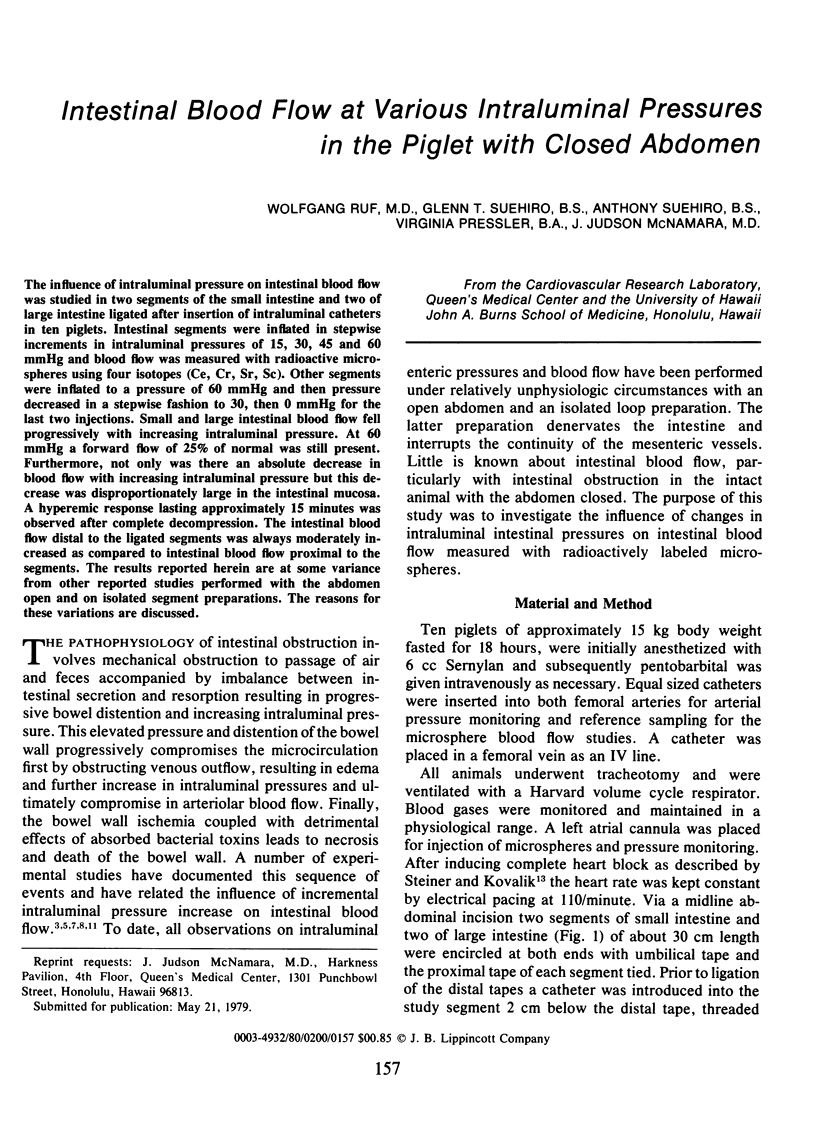

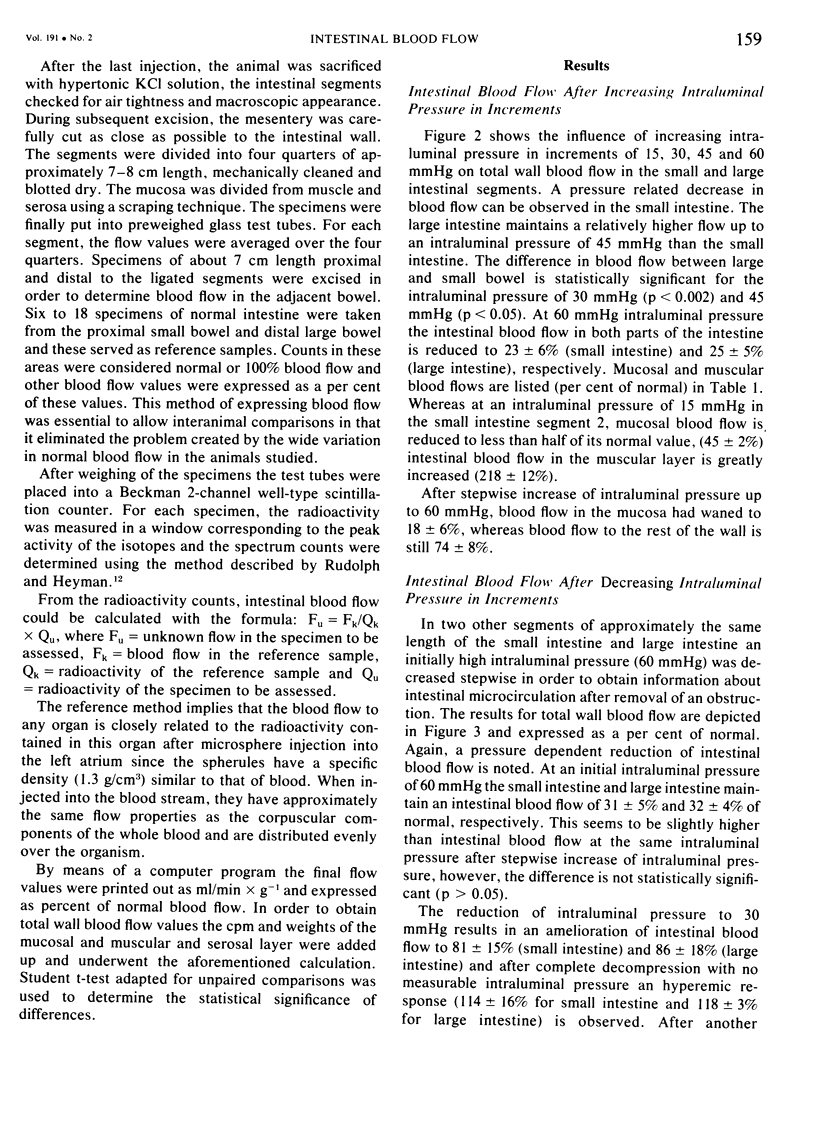
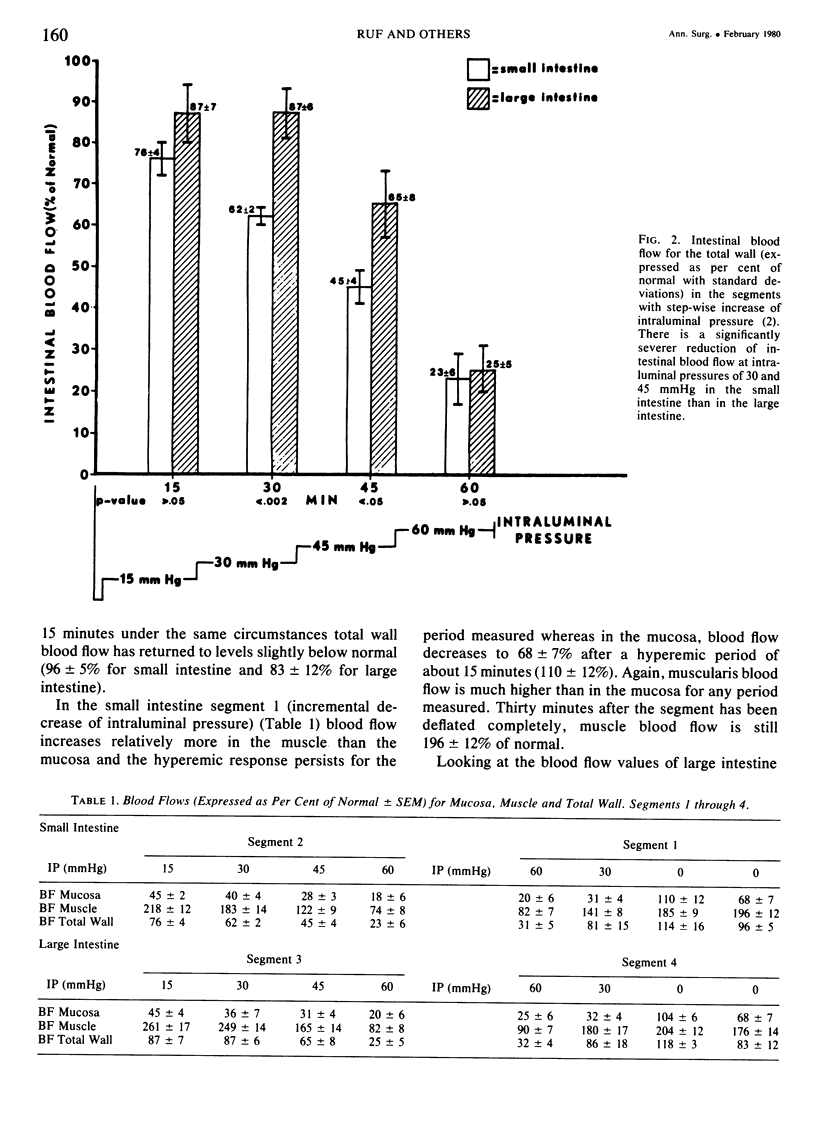
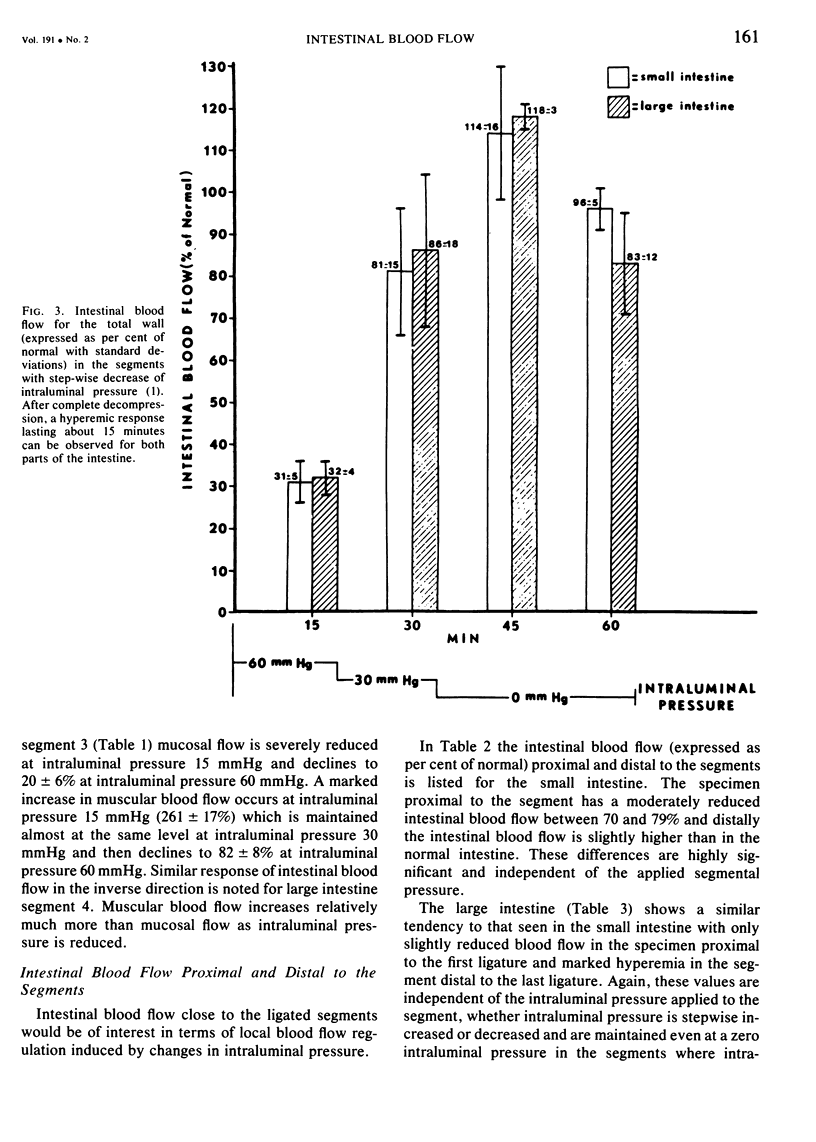
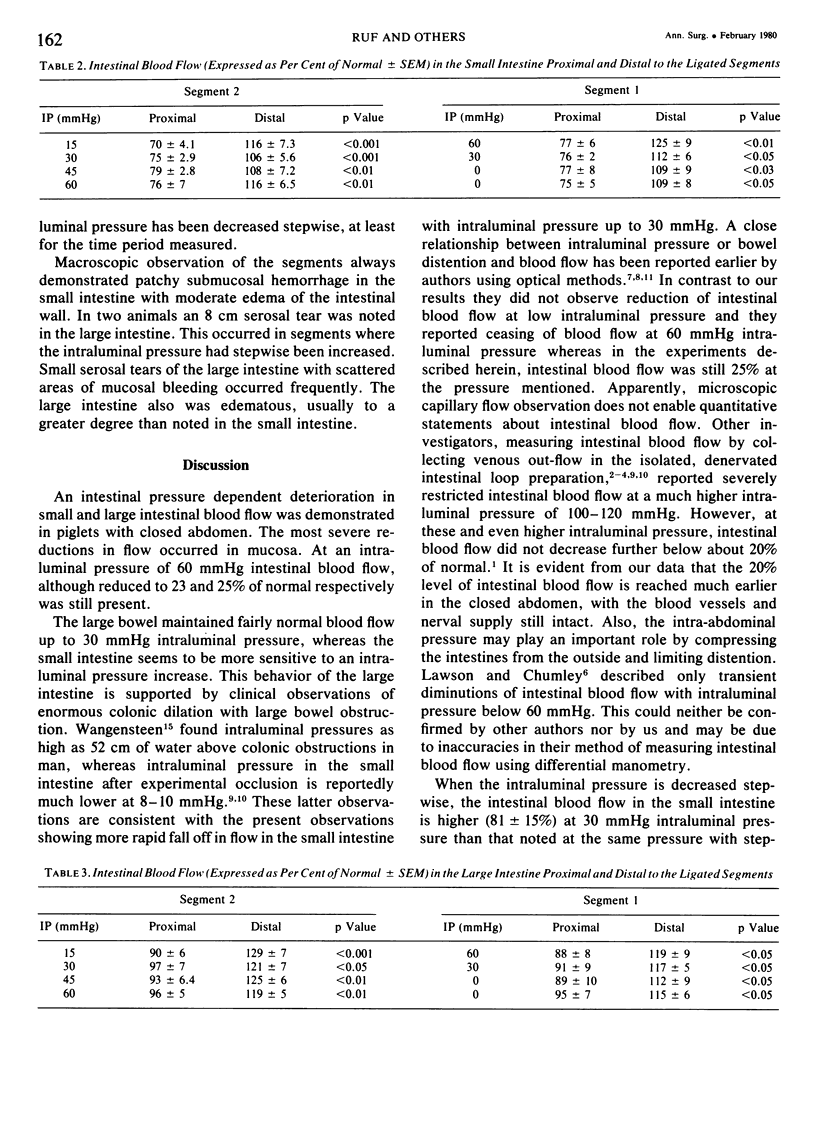
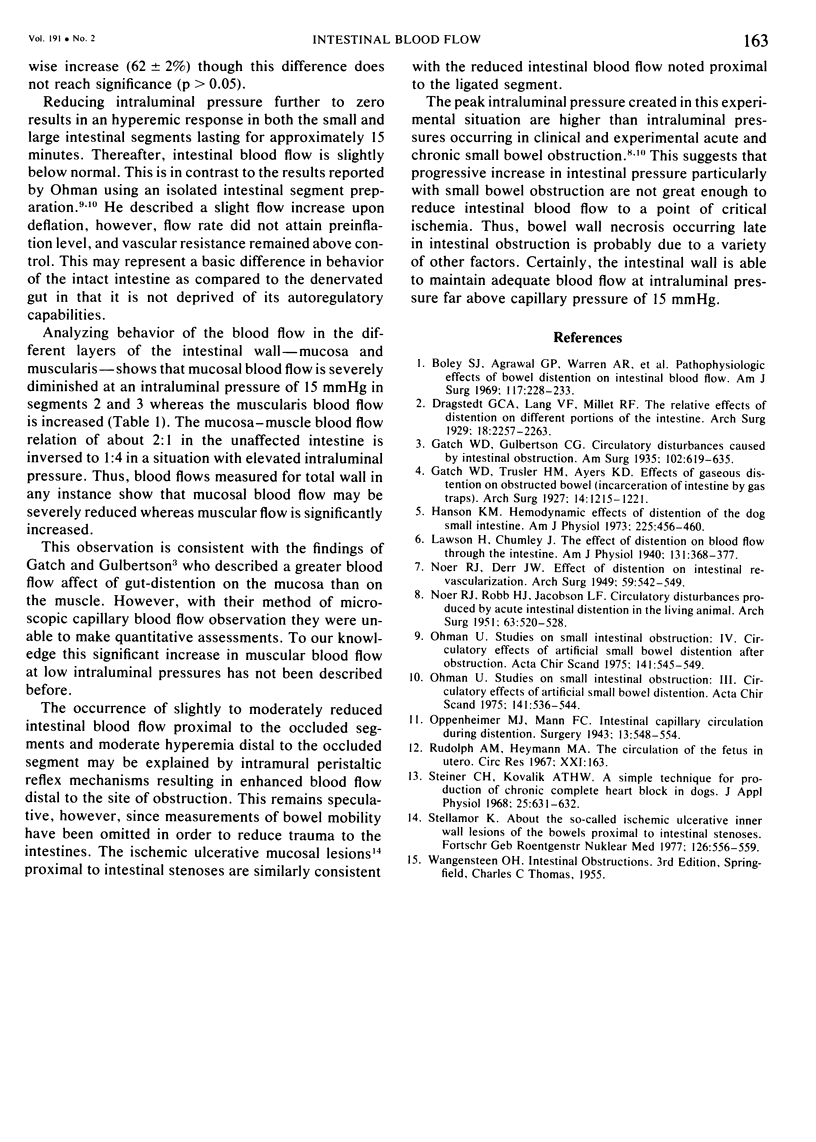
Selected References
These references are in PubMed. This may not be the complete list of references from this article.
- Boley S. J., Agrawal G. P., Warren A. R., Veith F. J., Levowitz B. S., Treiber W., Dougherty J., Schwartz S. S., Gliedman M. L. Pathophysiologic effects of bowel distention on intestinal blood flow. Am J Surg. 1969 Feb;117(2):228–234. doi: 10.1016/0002-9610(69)90308-0. [DOI] [PubMed] [Google Scholar]
- Gatch W. D., Culbertson C. G. CIRCULATORY DISTURBANCES CAUSED BY INTESTINAL OBSTRUCTION. Ann Surg. 1935 Oct;102(4):619–635. doi: 10.1097/00000658-193510000-00012. [DOI] [PMC free article] [PubMed] [Google Scholar]
- Hanson K. M. Hemodynamic effects of distension of the dog small intestine. Am J Physiol. 1973 Aug;225(2):456–460. doi: 10.1152/ajplegacy.1973.225.2.456. [DOI] [PubMed] [Google Scholar]
- NOER R. J., ROBB H. J., JACOBSON L. F. Circulatory disturbances produced by acute intestinal distention in the living animal. AMA Arch Surg. 1951 Oct;63(4):520–528. doi: 10.1001/archsurg.1951.01250040530013. [DOI] [PubMed] [Google Scholar]
- Ohman U. Studies on small intestinal obstruction. III. Circulatory effects of artificial small bowel distension. Acta Chir Scand. 1975;141(6):536–544. [PubMed] [Google Scholar]
- Ohman U. Studies on small intestinal obstruction. IV. Circulatiory effects of artificial small bowel distension after obstruction. Acta Chir Scand. 1975;141(6):545–549. [PubMed] [Google Scholar]
- Rudolph A. M., Heymann M. A. The circulation of the fetus in utero. Methods for studying distribution of blood flow, cardiac output and organ blood flow. Circ Res. 1967 Aug;21(2):163–184. doi: 10.1161/01.res.21.2.163. [DOI] [PubMed] [Google Scholar]
- Steiner C., Kovalik A. T. A simple technique for production of chronic complete heart block in dogs. J Appl Physiol. 1968 Nov;25(5):631–632. doi: 10.1152/jappl.1968.25.5.631. [DOI] [PubMed] [Google Scholar]
- Stellamor K., Redtenbacher M., Kosak D., Karobath H. Uber die sogenannte ischämisch-ulzeröse Darminnenwandläsion proximal stenosireender Darmprozesse. Rofo. 1977 Jun;126(6):556–559. doi: 10.1055/s-0029-1230636. [DOI] [PubMed] [Google Scholar]


